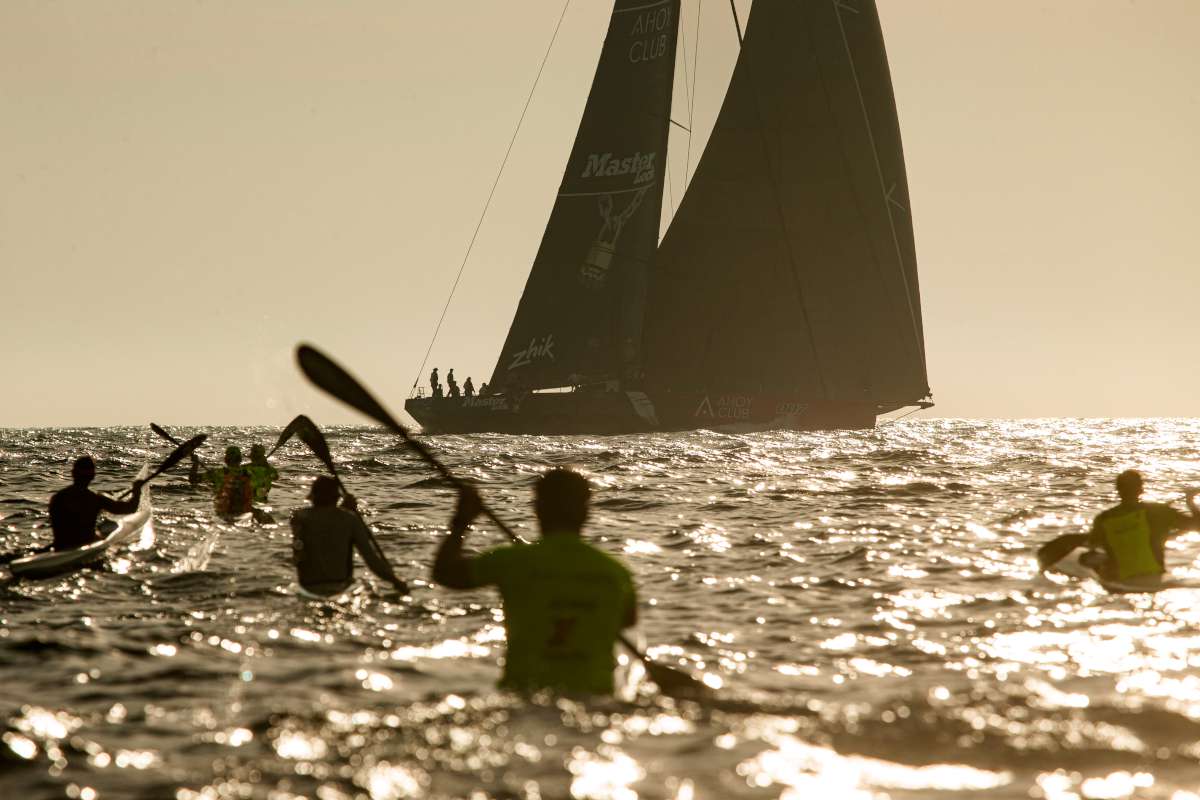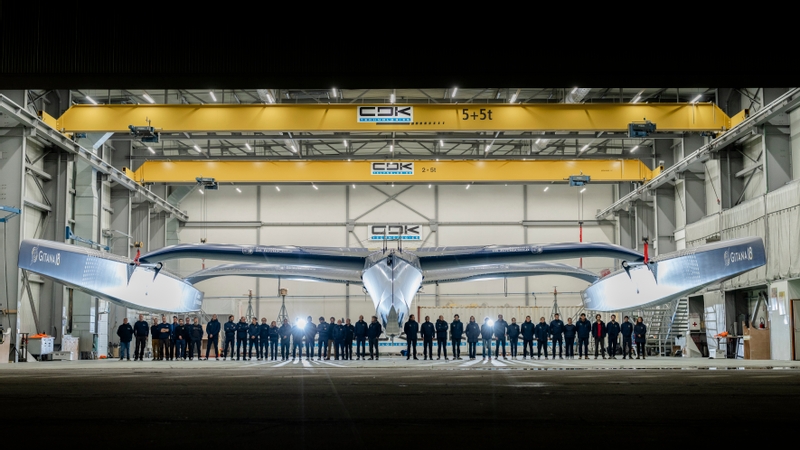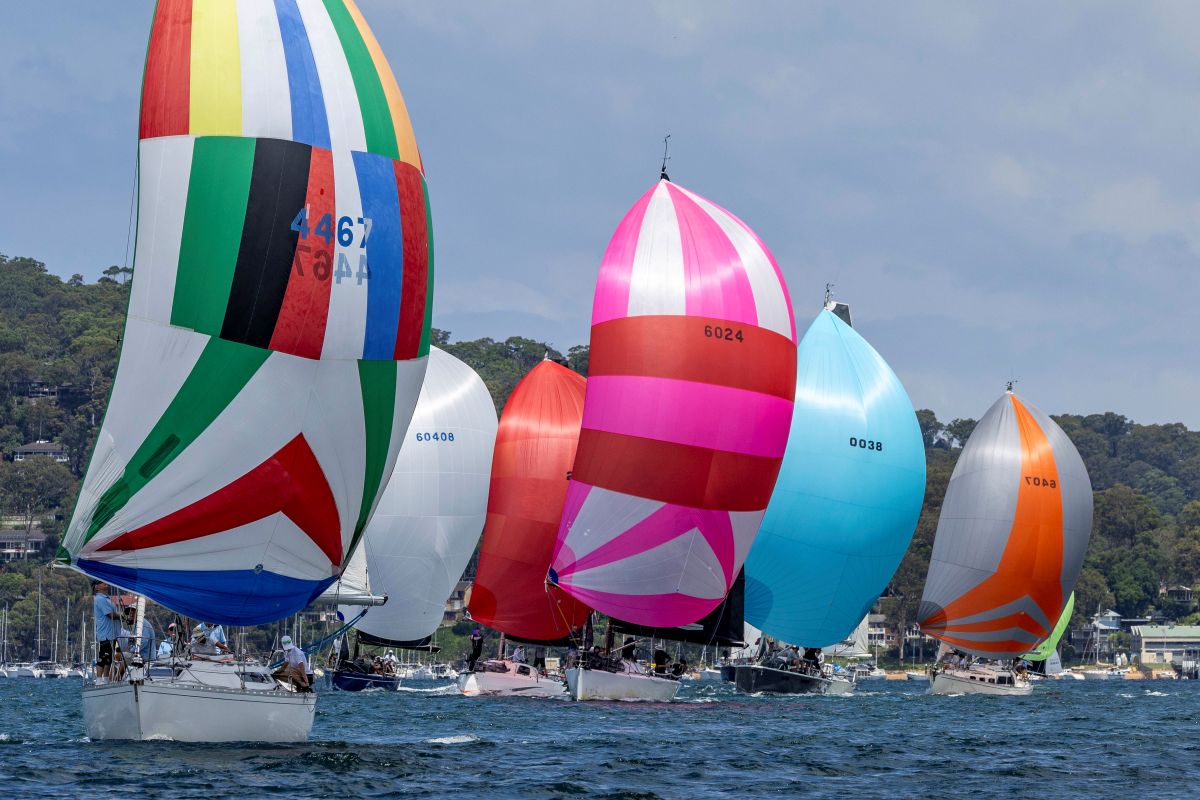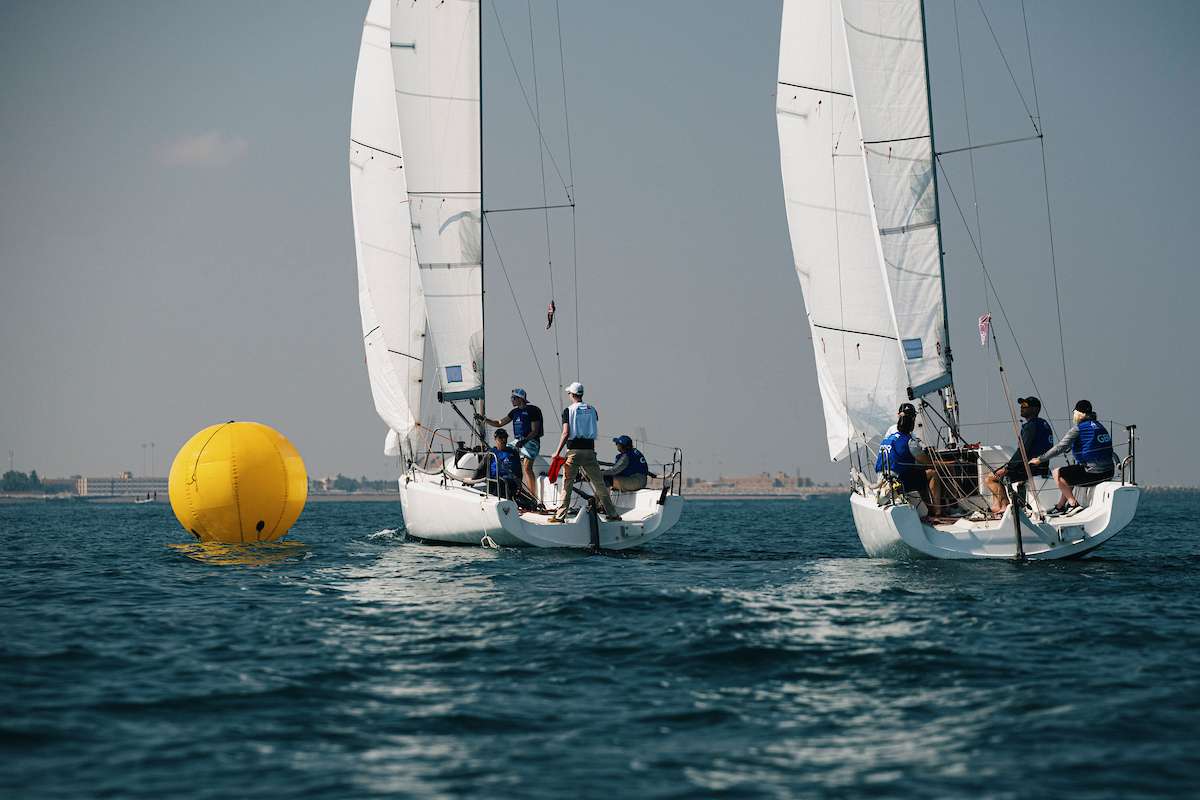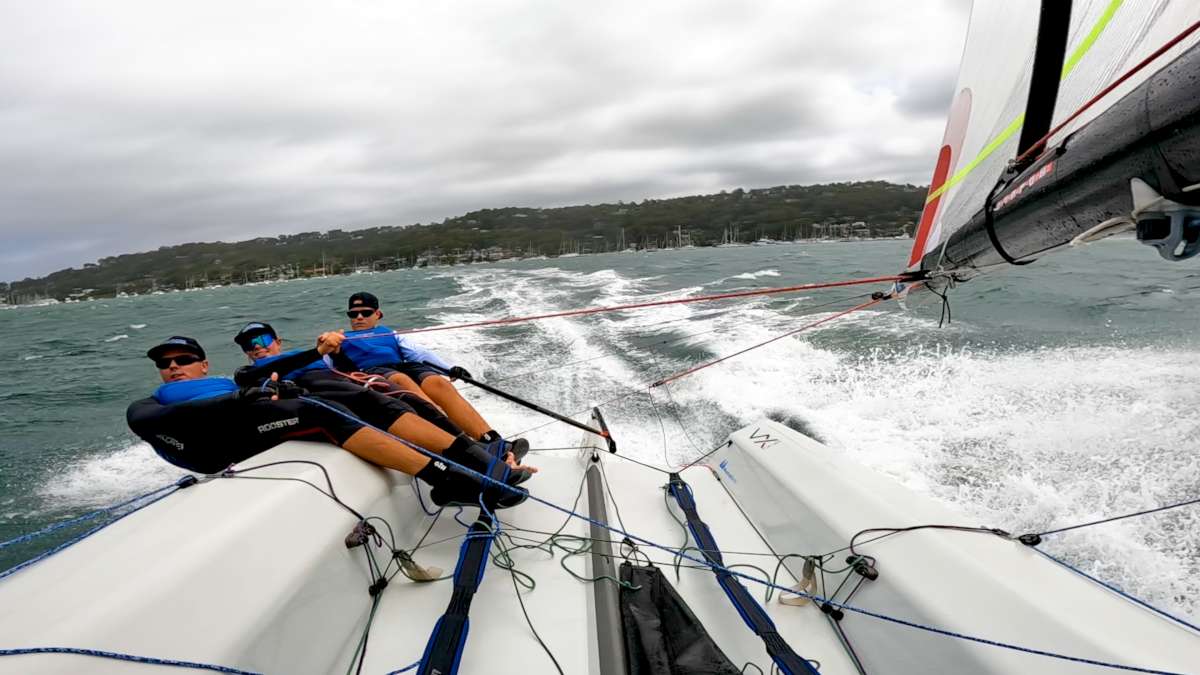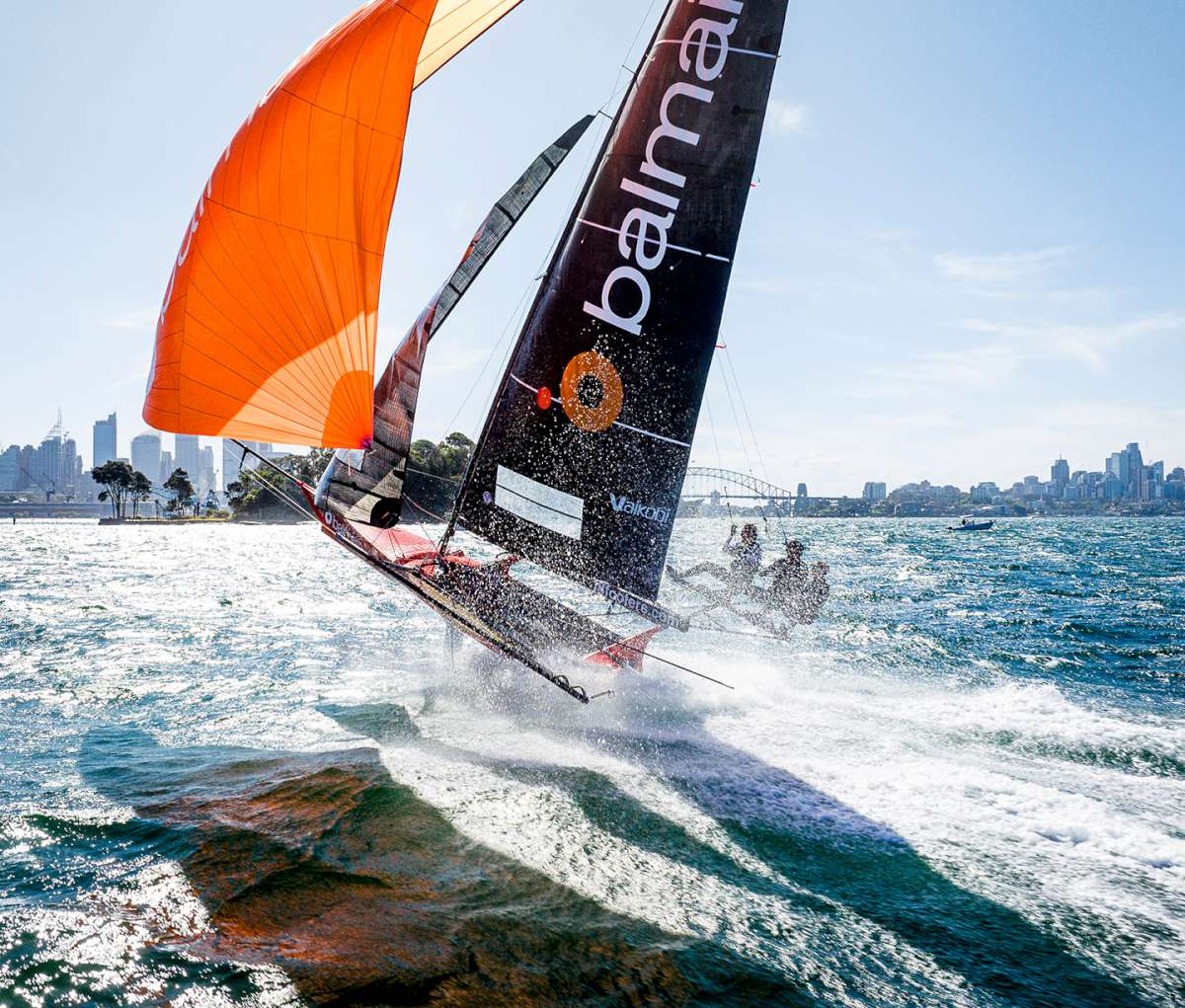Dehler has traditionally been a niche brand in Australia, but a closer examination of race results and the history of this enduring German producer shows it's a brand well worth putting on any club racer's list of potential yachts.
FROM LITTLE THINGS
In the late 1950s the Wirtschaftswunder, or German economic miracle, was in full flight as the country recovered from the devastation of war. Willi and Edith Dehler were running a successful electrical shop and like many others at the time, looked for a way to reap the rewards of their efforts.
Willi wanted to try gliding but Edith insisted he remain on terra firma – or at least on the water that covered it. So sailing was chosen and they bought a 4.2m long Stern dinghy which was moored in front of the Yacht Club Dortmund, which they had joined. Capsizing during their first sail did nothing to dampen their enthusiasm.
Innovative Dutchman, E.G. Ricus van de Stadt, the designer of the Stern, showed the Dehlers around his factory when they arrived in Holland to pick up their purchase. It was the beginning of a lifelong friendship, but more importantly opened the eyes of Willi Dehler to the potential of the new phenomenon from the United States – glass-reinforced plastic, or GRP.
In Germany, boats were still made from traditional materials such as steel, aluminium and laminated wood. One of the few fibreglass boats in the country was the club's tender, a beast of a thing that wouldn't row straight and after a short time began leaking when the sprayed-on GRP began to delaminate.
Willi Dehler could see the potential for building a better craft for his son Karl to race. He bought the drawings of the club dinghy, made a 1:1 wooden model and the corresponding negative mould himself and produced his first sailboat – named Winnetou after a popular cinema hero of the time.
The club immediately asked whether he could make a second one for them to replace the useless tender. Of course he could – he already had the mould. Then other club members started taking an interest.
What began as a hobby quickly grew into a business on the side. Production took place in one of the former foyers of a cinema in Dortmund, directly beside the electrical shop.
To get away from the pressures of running two businesses, the Dehler's took a break to attend the International Boat Show being held in Friedrichshafen, on Lake Constance in 1963. They took along two Winnetou dinghies and a life-size cut-out of the cinema hero, which became a huge attraction for the crowds. By the end of the show they had taken 28 orders, growing to 50 by Christmas of that year. The Dehler boat yard was in full-time business.
The cinema was too small for the increased order book, so production facilities moved to a former dance hall. Seven staff were employed to hand-make the Winnetous, rolling the resin manually into the mould in cut-out mats and rovings.
The dinghy was offered as multi-use – sailing, rowing or powered by a small outboard. A year later, a second model was designed. It was a metre longer and had a jib, mainsail and bouyancy aids in the sides. Four years later the more sporting Arrow S was launched, with an enlarged sail area and a self-draining cockpit.
Success followed, especially at the major boat shows, and it was crunch time for the Dehlers. The “sideline” had outgrown the electrical business and it was impossible to run both. Sailing won, a move was made to a bigger factory in Freienohl and Dehler Bootsbau OHG was founded, with Willi as 51% shareholder and driving force while his brother Heinz, also a keen sailor, became responsible for the commercial side.
TRAILER SAILER
Heading to the Hamburg Boat Show in 1964, Willi had decided to find a bigger yacht for family outings. The criteria included that it must be easily transportable by road to the Baltic Sea, impossible to capsize (perhaps still with memories of that very first sail in the Stern dinghy), unsinkable, with three dry berths for overnight anchoring, and a detachable cabin roof for sunbathing.
Willi visited all the stands and concluded that such a yacht did not exist. As a boatbuilder, logic suggested that he build it himself.
Obviously he turned to the pre-eminent designer of the time, his friend Ricus van de Stadt, for the design work and ultimately the boat came out of its mould in 1965. It was a centreboard yacht with wide recliner seats and a removable cabin roof. Willi named the 6.4m long boat Varienta on account of its variability. At the Hamburg Boat Show in 1966, 27 buyers signed contracts.
Between 1967 and 1972, other iterations of the Varienta appeared, including fixed cabin, self-draining cockpit and a shaft for the outboard motor. The design was recognised as a class by the German Sailing Association, one-design regattas began to take place and a class association was formed. By 2012, there were more than 500 members.
BIGGER AND BIGGER
In 1968, Willi's sailing ambitions were still growing, as was his business. Two new 2000 square metre sheds were constructed to begin production of a new keelboat. As always, it was based on the needs of his own family.
Wanting to sail further afield and stay dry in the sometimes inclement conditions of the Baltic, the new keelboat had to be over eight metres in length but transportable on a trailer, which meant she couldn't be more than 2.5m wide or heavier than 1.5 tonnes. Once again, no such beast was available on the market, so again van de Stadt was commissioned.
A special feature of the new yacht was a removable keel with a normal keel fastening that consisted of two thick bolts, removable with a key. Harbourmasters in the Baltic and Mediterranean hire out keels for popular production vessels for a fee, meaning owners don't have to take their own, so the new yacht could be easily trasported on a trailer.
A competition was held to name the yacht, with the 500th Varianta as the prize for the winning suggestion. Entries flowed and the name Optima was finally chosen. Although not designed as a racer, Willi Dehler entered her in the North Sea Regatta and won, despite never having sailed on that stretch of water before.
The victory confirmed Dehler's belief that even a cruising boat should sail fast. It needs to be simple to handle and safe, but “if they see someone in front of them they immediately want to overtake him” was Dehler's theory.
Once again, Dehler was ahead of the competition and by 1970 the company's sales revenue had tripled.
More models followed, mostly based on the successful Varianta and Optima but always with plenty of options. For Dehler it was never “any colour so long as it's black”. He understood the buyers' needs to have exactly the boat that suited their family and their purpose.
NEED FOR SPEED
Ten years after the first sailing dinghy was released from its mould, the Dehler brand made another giant step – producing a boat designed to race.
The bare hull of a Delanta 76, which had been described as resembling an IOR quarter tonner, was given a plywood flush deck with a small superstructure and a new rig, modified rudder and a new, deeper, welded steel keel, filled with lead.
Named Timschal, she made her debut in the Quarter Ton Class and won the 1973 World Championship in the series class and placed third overall. She repeated that placing the following year.
Dehler now turned his attention to producing serious racing yachts. In 1973 he released the Optima 92 Half Ton, based on the hull of his first blue water cruiser and the first Dehler to exceed 9 metres in length. The boat gained immediate success in both regatta weeks and offshore races such as the Round Heligoland Race. She also became the first Dehler to cross the Atlantic “without any problems worth mentioning” and later was sailed around the world.
Although production of the original sailing dinghies had by now stopped, the yard gained a contract to build 470s for Olympic competition and produced batches of around 200 per year. In total, around 1400 were built.
FAST COMFORT
Reading the history of the Dehler brand, it is obvious that Willi Dehler's yachts were based on his own principles and experiences. For example, he was appalled at the hardships when racing on a bare aluminium pure racer, claiming that “being more comfortable helps you win”.
“Out of spite” as he later claimed, he built the Sprinta Sport, developed in accordance with the latest trends in high-performance yacht design. The hull was 50% Kevlar and she had an aluminium frame to absorb the rigging and keel forces. At around 1100kgs she was 150kgs lighter than the cruising version.
In 15 starts in IOR classes VII and VIII she had 15 victories at major regattas and as a result licenses were granted to build the model in Britain and Canada. Around 500 Sprinta Sports were built by 1985.
BACK TO BASICS
Once again, Dehler's intuition proved correct, however, and he quickly saw the futility, from a commercial point of view, of producing one-off race boats. By 1986 he was back producing production hulls but applying the go-fast lessons he had learnt in the three-quarter ton wars of the early 1980s.
They were heady years for the sailing industry and Dehler rode at the front of the wave. They had taken over the van de Stadt yard and renamed it Dehler-Yachtbouw, had expanded sales and distribution companies in Austria and Switzerland and founded Dehler Marina GroBenbrode in 1974. In 1975 turnover had risen to 30 million Deutschmarks.
But rapid expansion brings its own problems and financial risks and Heinz Dehler decided he no longer wanted to be part of it. Outside capital had to be brought in to fund the rapid expansion and Dehler was no longer a family business.
New designs continued to be built and the yard continued to achieve success with awards and record sales flowing. The boats sailed well, they featured innovative and practical interiors and the production process kept prices competitive.
In the years between 1984 and 1994, 22 different yacht types and a dinghy were developed and sold. In 1985 a record 700 units were delivered from the factory.
Innovations were plentiful, with Dehler one of the first to develop a 7/8 rig that made headsail changes less frequent. With this he combined the Dehler Maindrop system with a fully battened mainsail that later became the model for superyachts with their V-shaped booms. Dehler-Yachtbau was also the originator of the lifting keel, the folding bathing and rescue ladders at the stern and the pre-crimped steering wheel. Too far ahead of his time, Willi also experimented with a dual rudder system that didn't make it into production.
Always juggling the balance between expensive lightweight construction, performance and price, Willi Dehler tended towards keeping prices affordable. But the boats were extremely well-constructed, as a crash test conducted by a German sailing magazine proved.
The prototype of a Dehler 31 sailing at around 6.5 knots was deliberately crashed into a barrel containing 120 litres of water, a 10m long pine trunk weighing 200kgs and a floating pontoon weighing 1.5 tons. The climax was a triple impact with a stone harbour mole. Apart from scratches and cracks in the gelcoat and a small hole caused by the same spot being hit twice, there was no other damage. Afterwards the test yacht sailed back to its marina berth.
TROUBLED WATERS
As previously stated, massive growth leads to financing problems and Dehler ran into a perfect storm. The dealer network had expanded internationally and it was the USA that brought the firm undone. The US dealer failed spectacularly and unsold yachts, baked on the hard in the hot Texas sun, had to be repossessed and repatriated. There was no insurance and the banks pulled the plug.
The last yacht initiated by Willi Dehler and overseen through production by son Karl was the Dehler 41 DS prototype that was launched in 1994.
Willi was gone from the business he had founded and fostered, but Karl stayed on as part of the management board appointed by the banks. He remains with the company today.
Dehler-Yachtbau continued to produce award-winning and race-winning yachts, and continued to offer customisation, an important point of difference with the one-size-fits-all approach of other manufacturers.
In 1999, 36 years after he founded the company that still bears his name, Willi Dehler died. In the same year, De Kok Holdings took over the Dehler group and restarted production in Freienohl.
Various ownerships followed before the current owners, Hanse Yachts, bought the company from the creditors in May 2009, believing correctly that the good name that Dehler had for producing fast, quality yachts at a good price would fit nicely within their own stable.
Production was moved to Hanse's headquarters at Griefswald on the Baltic Sea in Germany's North-east.
Dehler has thrived under Hanse's ownership. Now designed by leading design team, Judel/Vrolijk, the brand celebrated its 50th anniversary in 2013 with the release of the new Dehler 38 which would go on to win major regattas and become a favourite among racers and cruisers alike.
DEALERSHIP
Once the cause of so much angst, the Dehler dealership network again spans the globe.
The Australian and New Zealand agents are Team Windcraft, based on Pittwater in Sydney's north. They offer the Dehler 34, 38, 42 and 46 models and have sold 31 of the brand's yachts since they became the dealer in 2013.
Like the Dehler family, the company has built its knowledge of the brand by sailing it. Former Windcraft owner, Peter Hrones, brought the first Dehler 38, Rogue, into Australia in its launch year of 2013 and won Airlie Beach Race Week a year later. Current dealership owner, Anthony Bishop, won his division at this year's Hamilton Island Race Week on his Dehler 38 Rocksalt.
Bishop says that Dehler was one of the main reasons he bought Windcraft last year. “The Hanse family of yachts really covers the full spectrum from blue water cruising to out-and-out racing. As a racer myself, I love the speed and ease of handling of the Dehler 38. But true to Willi Dehler's principles, it's also a very comfortable boat to take my family or friends for a quiet cruise or a club twilight.”
Owners, too, seem very happy. This quote is from Sydney sailor Serge Busato who also sails a D38: “I can confidently say I’m 100% happy with just about every aspect of Renegade. She’s just a dream to sail hard up wind and then off the wind with the Code 0 up she literally takes off – my regular weekly sailing mates can’t believe how well she sails on just about every sailing angle and how easy she is to sail. We use the Code 0 virtually every time we go out and it always brings a smile to everyone’s face as we roar up and down the harbour.”
Those sentiments would make Willi Dehler very happy. ✵
For more information on the Dehler range or to arrange a test sail, please contact Ric Hawkins on (02) 9979 1709 or email ric@windcraftgroup.com.
– Roger McMillan





